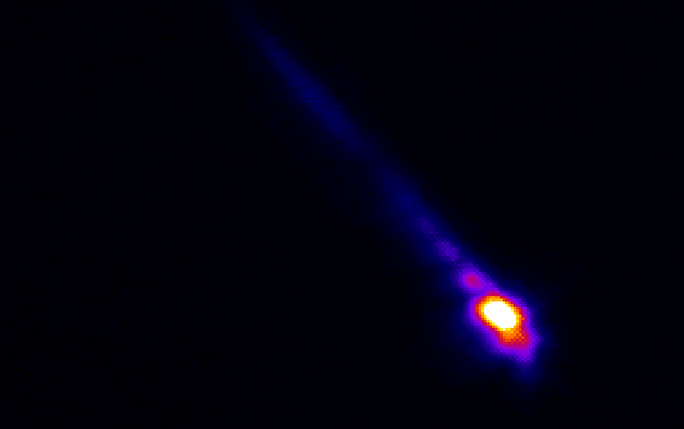In this global lockdown period most experimental physics has understandably been put on hold. With most of the world’s scientists unable to reach or access their experiments, efforts have shifted to simulations and planning for the future. And so, a group of physicists spread across the University of Liverpool and Diamond (UK), who had installed an optical radiation imaging system in the 3 GeV ring at Diamond at the end of 2019, expected the same for their experiment.
The system that was installed was designed to be operated ~400m away, in the Diamond control room; serendipitously this meant that thanks to some ingenuity with VPNs and video conferencing software, the experiment could be operated from ~200 miles away!

With many of the synchrotron light sources around the world closed due to the pandemic, there was no guarantee that beam time would be available at Diamond. Thankfully, the synchrotron radiation at Diamond has been in use for several weeks for many studies focussing on Covid-19. As the University of Liverpool’s experiment was completely non-invasive, it did not alter the beam at all for these important Covid-19 projects. Therefore for the past few weeks a series of experiments have been undertaken which aim to characterise the imaging capabilities of an existing diagnostic beamline, and hopeful shine a light on any beam halo effects. The image below shows the screens of Dr Joseph Wolfenden, from the Quasar Group, where on the left he is connected to the experiment situated in the Diamond tunnel and on the right he is being shown the various controls and beam parameters direct from the control room by the Diamond team.
Beam halo is the relatively low intensity area of a beam which surrounds the core section. For high energy machines this low intensity is still an issue and can cause problems ranging from stored beam instabilities, all the way up to actual machine damage. The goal of the beam halo studies was to isolate and remove the optical radiation generated by the core of the beam, and image only the halo. This technique was also used to study the imaging capabilities of the diagnostics beamline.

The image above presents an example image of the 3GeV electron beam at Diamond. The bright core is where the beam is located, and the elongated tail is an optical effect caused by various apertures along the beamline.
The group will now spend several weeks analysing the large quantity of data they have acquired. They will then use these results to guide improvements to the existing system and future measurements once the lockdown has passed.
